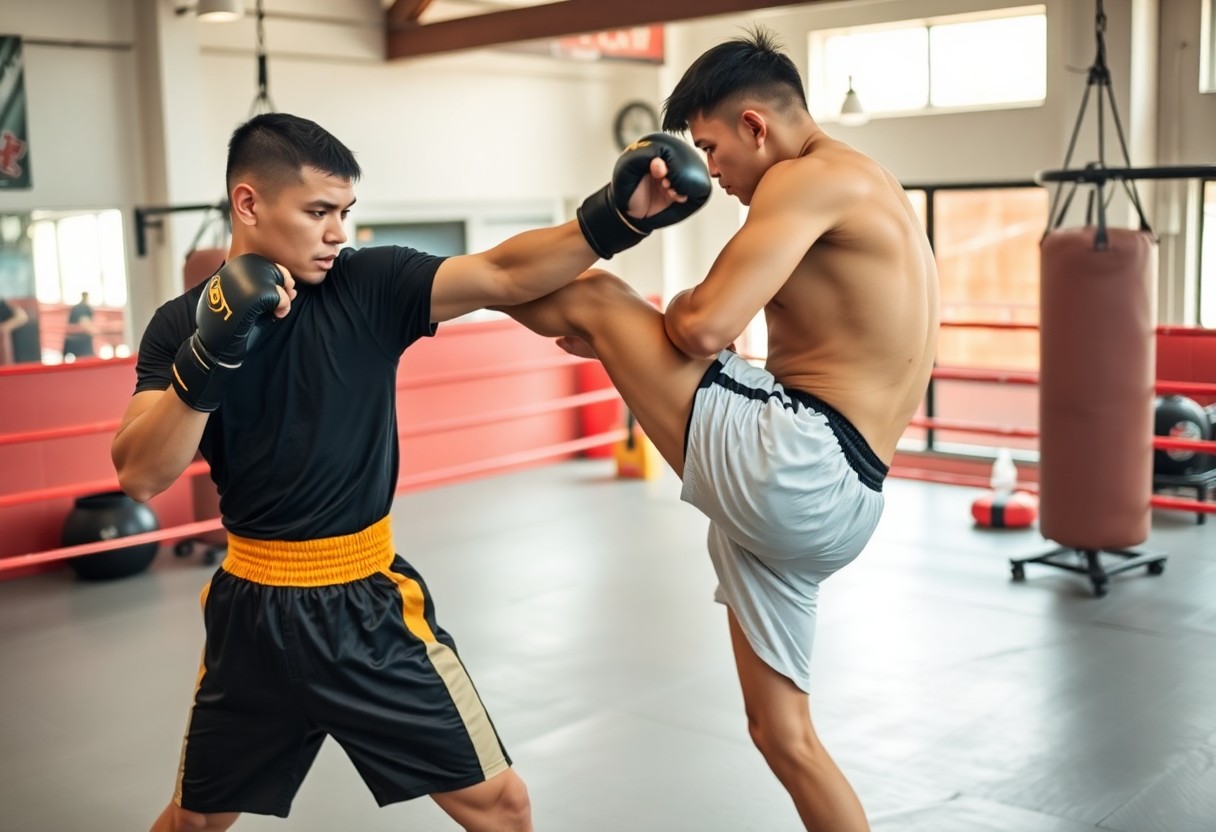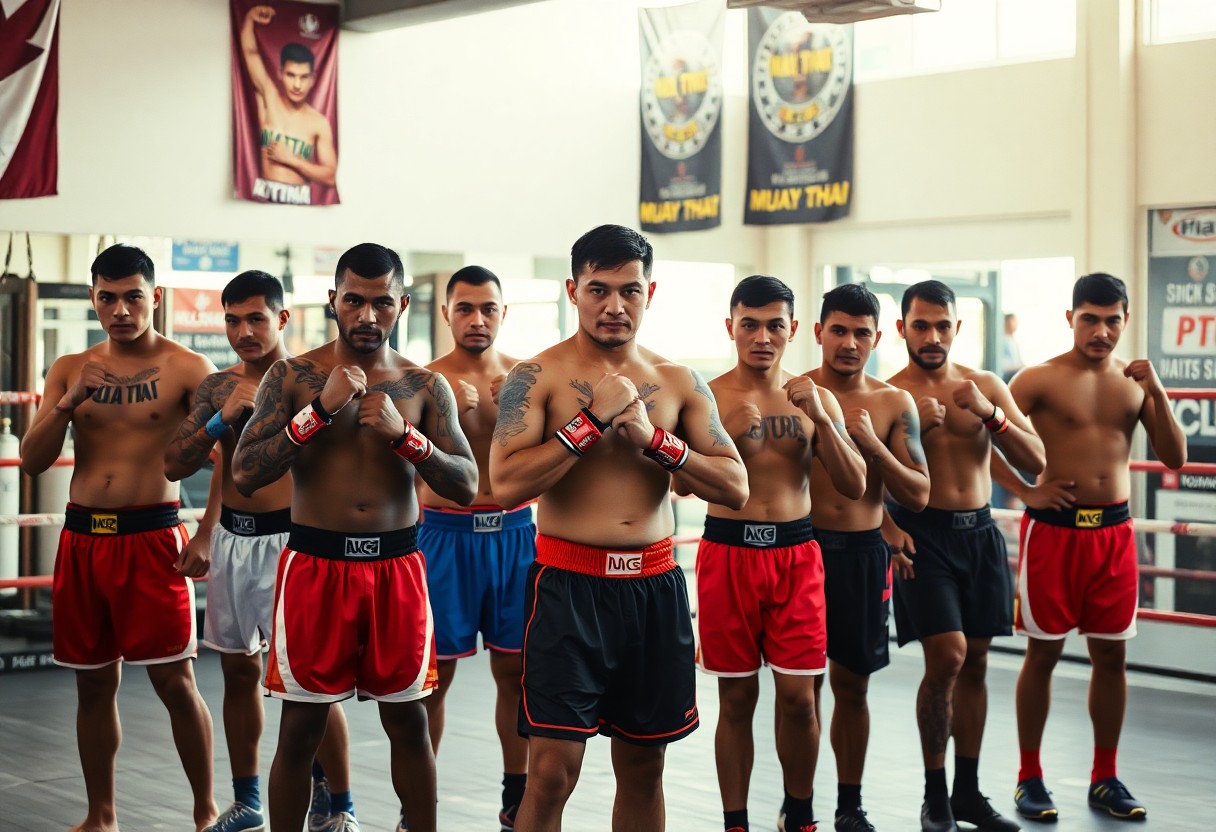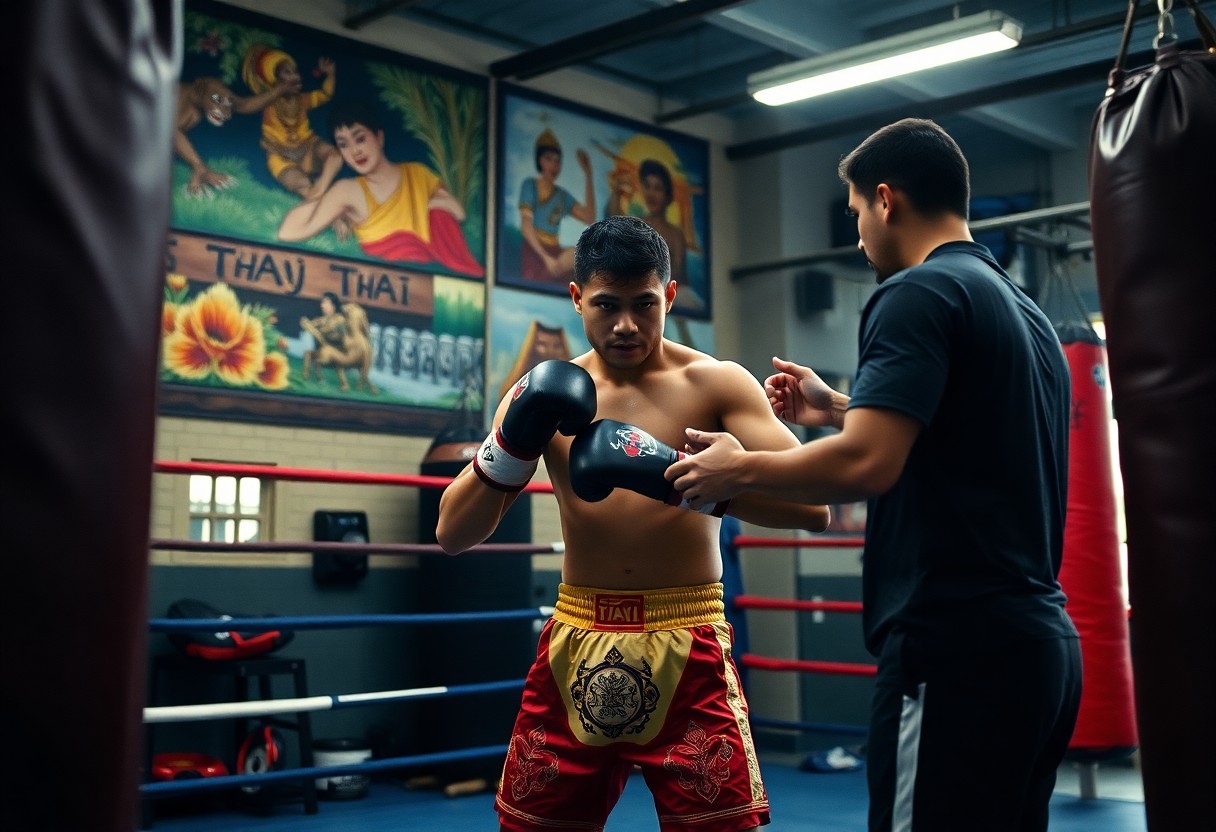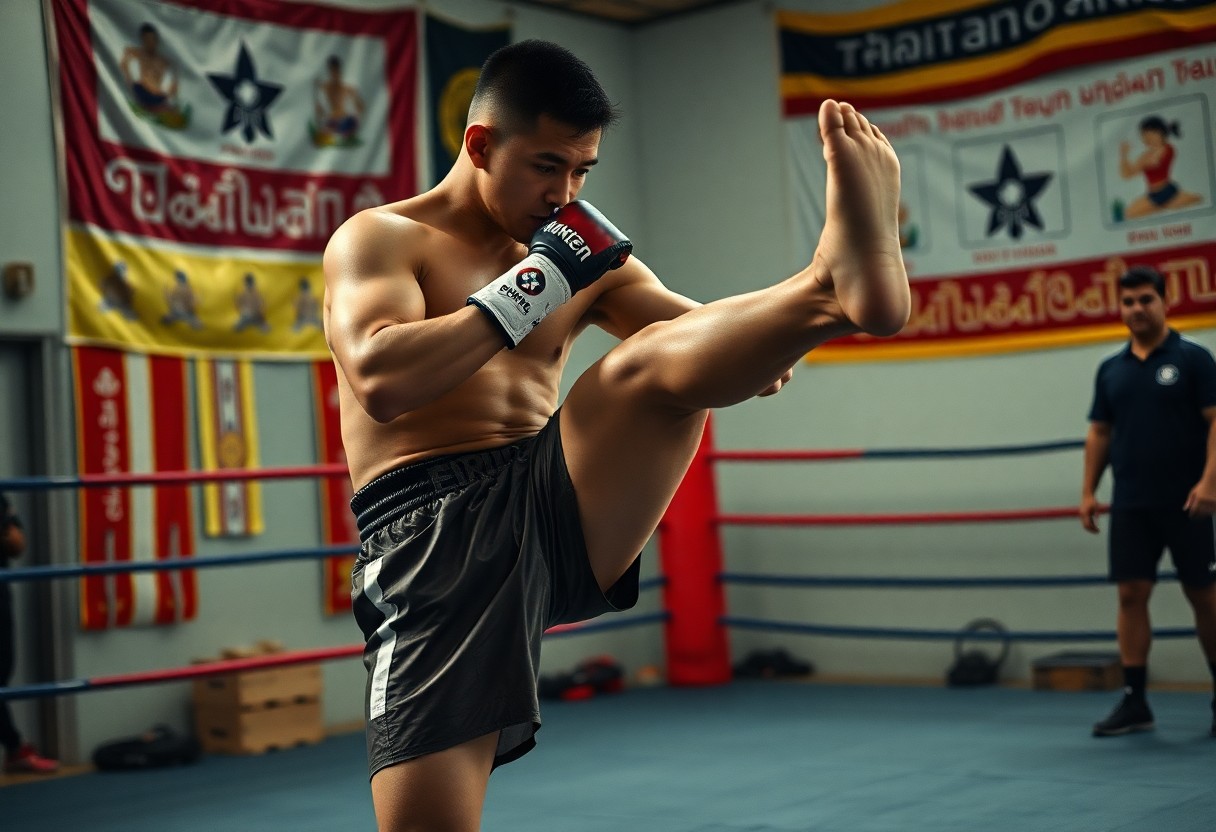
Most fighters understand that mastering kicks in Muay Thai can significantly enhance your overall performance in the ring. The roundhouse, teep, and low kick are fundamental techniques that not only improve your striking power but also your defensive skills. In this blog post, you will learn the mechanics of these powerful kicks, how to effectively execute them, and tips to incorporate them into your training regimen. By the end, you’ll have a deeper appreciation for the art of Muay Thai and the impact it can have on your fighting style.
The Fundamentals of Muay Thai Kicks
As you begin on your journey in Muay Thai, understanding the fundamentals of kicks is important. Mastering the various techniques, like the roundhouse, teep, and low kick will not only enhance your striking ability but also improve your overall performance in the ring. Developing a solid foundation in these kicks will elevate your skills and give you confidence in your fighting technique.
Importance of Technique
An effective kick is the product of precise technique. By focusing on the details of your form, you can maximize power and minimize the risk of injury. Proper technique ensures that each kick delivers optimal impact while maintaining balance and control, which will be vital as you advance in your training.
Body Mechanics and Kicking
At the core of effective Muay Thai kicks is a strong understanding of body mechanics. The way you position your body, engage your core, and transfer weight directly affects the power and efficiency of your kicks. Proper alignment and movement make each strike not just stronger, but also safer for you as a practitioner.
Also, effective body mechanics involves coordinating your upper and lower body in harmony. Engaging your hips and rotating your torso are pivotal actions that contribute to the power of your kick. By utilizing your entire body and ensuring that every part functions together, you will improve your striking technique and ensure each kick lands with maximum force. Focus on developing these mechanics to elevate your performance in Muay Thai.
Mastering the Roundhouse Kick
There’s a reason the roundhouse kick is a signature move in Muay Thai: its power and versatility. By mastering this technique, you can deliver devastating strikes to your opponent, whether targeting the legs, body, or head. Achieving efficiency in your roundhouse kick not only enhances your effectiveness in a match but also improves your overall striking game.
Proper Form and Execution
Behind every effective roundhouse kick is the proper form and execution. Stand with your feet shoulder-width apart, shift your weight onto your supporting leg, and pivot on the ball of that foot. As you swing your kicking leg, rotate your hips and shoulders, generating power from your core. Aim to strike with the shin or instep, ensuring that your knee is raised high throughout the kick for maximum impact.
Common Mistakes to Avoid
Behind the impact of a powerful roundhouse kick are avoidable errors that can diminish your technique. Ensure you don’t compromise your balance by failing to pivot correctly or dropping your kicking leg too quickly after execution. Additionally, neglecting the proper hip rotation can lead to weak strikes, while overextending your leg may leave you vulnerable. Addressing these mistakes enhances your power and keeps you safe during exchanges in the ring.
For instance, many practitioners make the mistake of locking their knee when delivering the kick, which can result in injury and reduced mobility. Additionally, failing to maintain a strong guard while kicking can leave you exposed to counterattacks. Pay close attention to your stance and movement; a stable foundation will not only support your roundhouse kick but also keep you agile in subsequent maneuvers. By being mindful of these common pitfalls, you can elevate your skills in Muay Thai effectively.
The Teep Kick
One of the fundamental techniques in Muay Thai, the teep kick, serves multiple purposes. This versatile strike allows you to maintain distance, disrupt your opponent’s rhythm, and create openings for further attacks. Utilizing the teep effectively can help you control the flow of the fight and gives you a strategic advantage in both offensive and defensive scenarios.
Purpose and Usage
On its surface, the teep kick may seem simple, but its effectiveness stems from its ability to act as both a defensive measure and an offensive weapon. By pushing your opponent away, you can create space to reset your position or set up your next strike. Additionally, the teep can serve to unsettle your opponent, making them hesitant and less effective with their own attacks.
Strategies for Effective Teeps
Beside understanding the basic mechanics, developing your teep kick requires an understanding of timing, precision, and targeting. Focus on your foot placement to ensure maximum reach while maintaining balance. Experiment with different angles and body positioning to catch your opponent off guard, making your teep not just a defensive tool, but a weapon that can facilitate offensive strategies as well.
Considering the importance of timing, aim to use your teep when your opponent is advancing or out of position. Practice engaging in feints to draw openings and catch them off guard as you strike. Additionally, integrating lateral movement can enhance your ability to land effective teeps while keeping you out of your opponent’s range. The more you train this technique in various scenarios, the more instinctively you will be able to use it, allowing you to maintain control throughout your bouts.
The Low Kick
Once again, the low kick demonstrates its effectiveness as a primary weapon in Muay Thai. By targeting your opponent’s legs, you can disrupt their balance and movement, making it an crucial technique in both offense and defense. Mastering this kick allows you to inflict damage while creating openings for follow-up strikes, ultimately enhancing your overall performance in the ring.
Target Areas and Effects
Below, the primary target areas for a low kick include your opponent’s thigh and calf. These strikes can incapacitate your opponent’s mobility, leading to reduced power in their attacks. A well-placed low kick can accumulate damage, creating lasting effects that weaken your adversary throughout the match.
Timing and Delivery Techniques
Any effective low kick requires precise timing and technique for maximum impact. To optimize your delivery, you should aim to strike as your opponent steps in, utilizing their momentum against them. Pay attention to their footwork patterns, and incorporate feints to create openings for your kicks.
Considering the timing and delivery techniques of the low kick, you need to focus on the fluidity of your movement. Set up your kick through lateral movements and maintaining a solid stance. As your opponent commits to an attack, step offline and deliver your low kick to capitalize on this moment. Precision and control are paramount; develop muscle memory through consistent practice to ensure that your low kicks are delivered with speed and power. This will not only enhance your effectiveness but also increase your confidence as you execute this key striking technique.
Integrating Kicks into Sparring
Now that you have mastered the fundamental Muay Thai kicks, it’s necessary to integrate them into your sparring sessions. This means not just using kicks as standalone techniques but combining them with punches and defensive maneuvers. Focus on the timing, distance, and rhythm of your movements to ensure your kicks are effective and well-timed against an opponent. This integrated approach will help you become more versatile and unpredictable in the ring.
Drills for Practicing Kicks
Beside sparring, engaging in specific drills can enhance your kicking performance. Work with a partner or on a heavy bag to practice executing roundhouse kicks, teeps, and low kicks in various combinations. Set up targeted drills that challenge you to land kicks while maintaining balance and control. Consistent repetition will help solidify these techniques, allowing them to flow naturally into your sparring exchanges.
Real-World Application in Sparring
One of the best ways to apply your kicks in sparring is to focus on their strategic use. As you engage in matches, try to read your opponent’s movements and establish the appropriate moments to unleash your kicks. This not only creates openings but also helps you control the pace and flow of the fight.
Sparring allows you to test techniques in a controlled environment, giving you a chance to develop your timing and responsiveness. Use your kicks to disrupt your opponent’s rhythm and create openings for additional attacks. Pay attention to how your kicks affect your opponent and learn to adjust your tactics based on their reactions. This real-world application is necessary for building confidence and honing your skills for both practice and competition.
Conditioning for Muay Thai Kicks
Many practitioners underestimate the importance of conditioning for Muay Thai kicks. Effective kicks require not only technique but also a solid foundation of strength and flexibility. By incorporating a consistent conditioning routine, you’ll enhance your overall kicking performance, leading to more powerful and accurate strikes. This chapter probes into the important components of conditioning, ensuring you are well-equipped to master the roundhouse, teep, and low kick.
Strength and Flexibility Training
Kicks in Muay Thai demand a combination of strength and flexibility. To improve your kicking power, focus on exercises that build leg strength, like squats and lunges. Simultaneously, dedicate time to flexibility training, such as dynamic stretches and yoga, to achieve a greater range of motion. This balance will enhance the effectiveness of your kicks, allowing you to strike with both speed and force.
Injury Prevention Strategies
Muay Thai can be physically demanding, making injury prevention important for longevity in the sport. You should prioritize warm-up routines, proper technique, and consistent cooldown practices to mitigate the risk of injury. Incorporate exercises that strengthen stabilizing muscles around your joints to create resilience against common ailments.
Another effective way to prevent injuries is by listening to your body and avoiding overtraining. Be attentive to any signs of discomfort or fatigue, and allow adequate rest between training sessions. Additionally, utilizing proper protective gear during training can help shield your joints and muscles from trauma. By integrating these strategies into your routine, you can enjoy a prolonged, successful journey in Muay Thai while minimizing injury risks.
Conclusion
Drawing together the techniques of Muay Thai kicks, mastering the roundhouse, teep, and low kick will significantly enhance your striking abilities and overall performance. Each kick serves a distinct purpose, and the more you practice, the more comfortable and effective you will become in using them during training and competition. By focusing on your technique and understanding the strategic applications of each kick, you can elevate your skill set, boost your confidence, and empower yourself in the ring.





